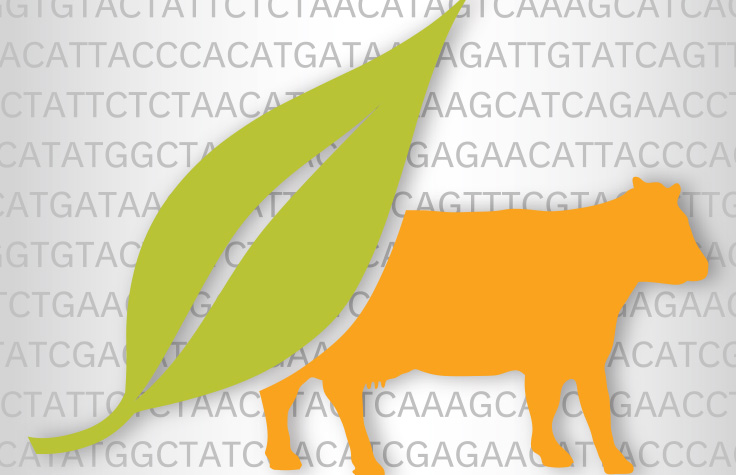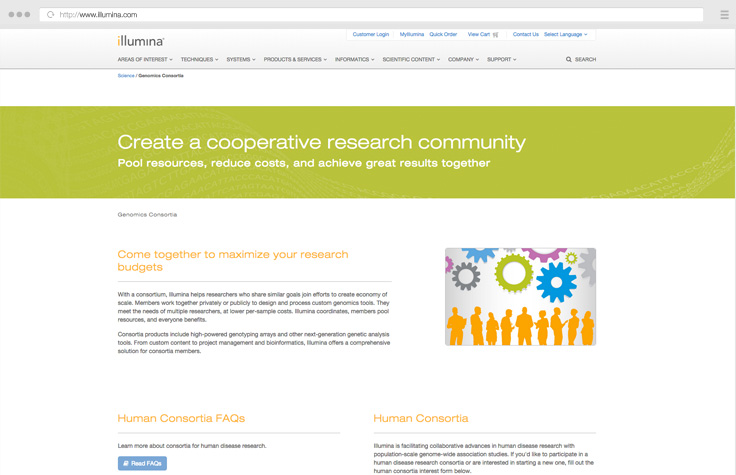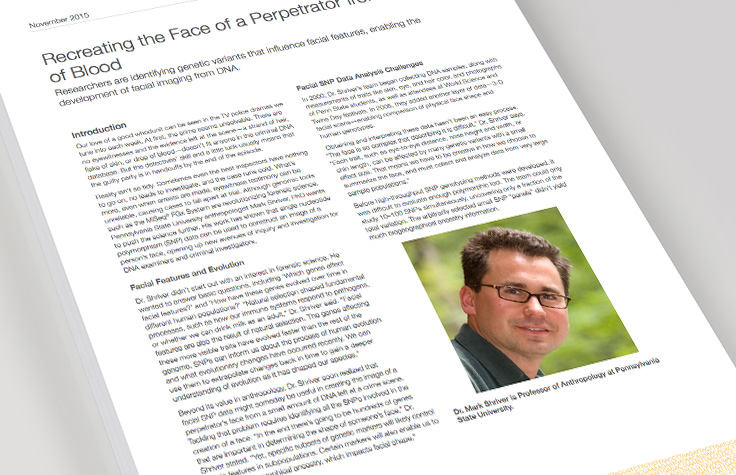Targeted Genotyping
Introduction to Targeted Genotyping
Targeted genotyping approaches provide a cost-effective alternative to whole-genome methods, when genome-wide genotyping is not practical or necessary. Targeted genotyping conserves lab resources and enables deeper coverage of rare variants. Illumina offers microarray and next-generation sequencing (NGS) genotyping solutions to target the exome or focus on specific genes of interest.
Advantages of Targeted Genotyping
- Allows researchers to focus time and expenses on specific regions of interest
- Generates a smaller, more manageable data set, thereby reducing data analysis burdens
- Offers a cost-effective solution with reduced turnaround time compared to broader approaches
Targeted Genotyping with Arrays
Targeted arrays allow you to genotype specific sets of targeted single nucleotide polymorphisms (SNPs), and focus research efforts on biologically meaningful variants. Microarrays with targeted content also enable greater throughput for screening high sample volumes. Illumina offers a variety of disease-specific and population-specific array solutions for targeted genotyping.
Genotyping to Understand Psychiatric Disorders
Dr. Abraham Palmer uses targeted arrays and NGS to identify genes that influence behavior.
Array and Library Prep Kit Selector
Find and compare targeted human genotyping arrays with this simple tool.
Find the Right ArrayCustom Targeted Genotyping
Develop genotyping arrays with custom markers to target any genomic regions or variants of interest, for any species.
Explore Custom GenotypingTargeted Genotyping with Sequencing
Genotyping by sequencing (GBS) offers efficiency for discovering, validating, and screening genetic variants using a highly targeted approach. Targeted GBS approaches can complement arrays by detecting novel variants in specific genome regions, and provide a lower cost alternative for some genotyping applications. Deep sequencing of targeted regions also helps characterize rare variants. Learn more about GBS.
Targeted Fish Genotyping with Sequencing
Scientists developed the Genotyping-in-Thousands by sequencing (GT-seq) method to genotype thousands of fish simultaneously.
Related Solutions
Cancer Germline Mutation Analysis

Identify germline mutations that predispose individuals to cancer using targeted microarrays and next-generation sequencing. Learn more about cancer germline mutation studies.
Large-Scale Genotyping

High-throughput microarrays help labs identify common genetic variations among large cohorts for population-scale genotyping studies. Learn more about high through-put genotyping.
Disease Variant Validation

After a variant is identified and associated with disease, targeted array and sequencing methods can help determine how a variant affects disease biology. Learn more about disease variant validation.
Genotyping Plants and Animals

Uncovering genetic variation in animals and plants can help inform breeding decisions, and may reveal mutations responsible for disease or parasite susceptibility. Learn more about plant and animal genotyping.
Interested in receiving newsletters, case studies, and information on sequencing methods? Enter your email address.
Additional Resources

Pharmacogenomics and Cardiovascular Disease
Find out how researchers used an Illumina array to identify responder genotypes in a failed cholesterol drug trial.

Genomics Consortia
Illumina helps researchers who share similar goals join efforts to pool resources and create genomics tools.
Amplicon Sequencing
Amplicon sequencing is a highly targeted approach that can be used to genotype large genomes.

HLA Genetics in Autoimmune Disease
Researchers query the genome with NGS and high-throughput genotyping to identify novel risk loci for immune-mediated disease.

Recreating a Face Based on DNA
Researchers identify genetic variants that influence facial features to enable facial imaging from DNA.

Genetics of Developmental Language Disorders
Arrays and NGS methods fuel research uncovering genetic variants that affect language and reading disorders.